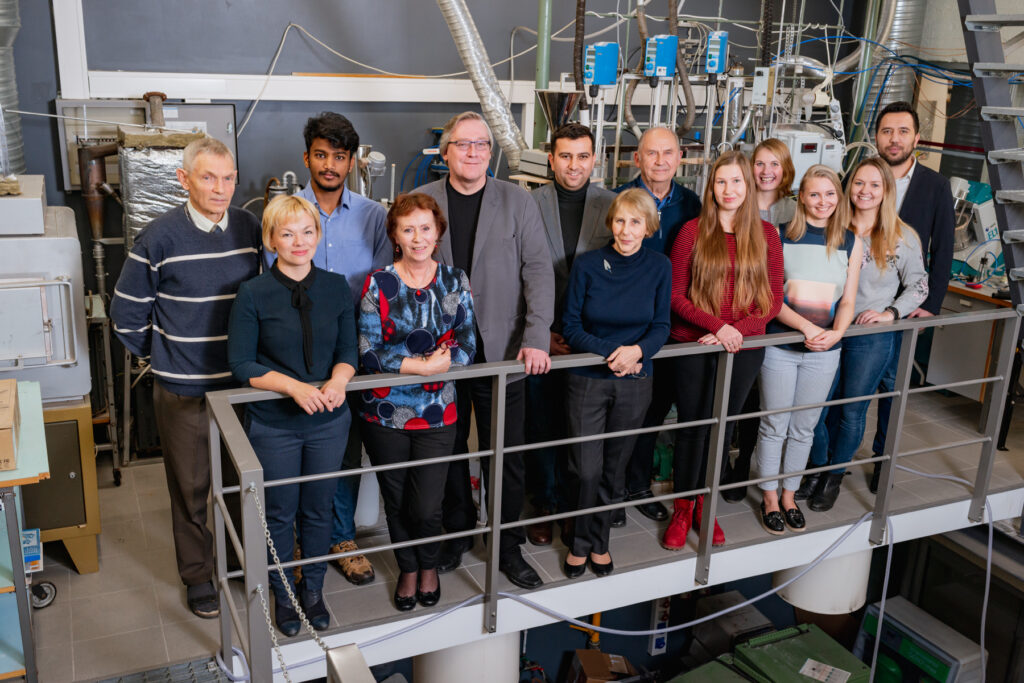As we all know, both cement and concrete are nowadays the most widely used construction materials in the world. What is less well known is that manufacturing of these construction materials is not an environmentally-friendly process. While fossil fuel based energy production contributes the most to the carbon footprint, cement and concrete production rank second in this blacklist.
TalTech Inorganic Materials Research Laboratory investigates the capture, utilization, and storage of CO2 emissions from oil shale power industry and cement manufacture. The researchers of the laboratory published an article on the topic in the Journal of Thermal Analysis and Calorimetry titled “CO2 mineralization by burnt oil shale and cement bypass dust: effect of operating temperature and pre-treatment“.
One of the authors of the article, Senior Researcher at the Inorganic Materials Research Laboratory Mai Uibu says, “The broader goal of our research was to find ways to reduce the carbon footprint by utilizing the industrial by-products of these industries. In particular, we investigated how to recycle waste produced in the cement and oil shale industry by utilizing its CO2 binding ability.“

One of the objectives of the Horizon 2020 project CLEANKER (CLEAN clinKER production by calcium looping process) is the construction of a CO2 mineralization reactor for the calcium looping demonstration system that will capture CO2 in the cement plant operated by Buzzi Unicem sited in Vernasca. In the case of CO2 mineralization, captured carbon dioxide gas is stored in the form of thermodynamically stable carbonate minerals, which, by eliminating the greenhouse effect of CO2 allows environmentally safe disposal or recycling of CO2.
Prototyping of the reactor was preceded by years of laboratory tests, the aim of which was to select the best potential CO2 binders and to find the optimal conditions for performing the carbonation process. Laboratory tests were performed using wet and dry carbonation route, investigating the effect of increased process temperature (400-500°C) and pre-treatment (grinding and hydration). In case of the dry carbonation, the main effect was achieved by hydration as pre-treatment, which allowed increasing of CO2 uptake capacity at lower temperatures. The tests showed that up to 240 kg of CO2 can be captured for every 1,000 kg of cement dust.

“The obtained product, carbonated cement kiln dust or oil shale ash can be utilized in the concrete application. This is therefore a case of circular economy, since it is not merely a method of burying CO2 emissions, but industrial waste processed by this method can be reused in production,” Mai Uibu says.
As a next step, the research group plans to apply the CO2 mineralization process directly in the production of a construction material.
The article is one of the mid-term reviews of work package 7 of the four-year joint project CLEANKER, integrating 13 international partners (LEAP, CSIC, VDZ, Polytechnic University of Milan, TalTech, LUT University, the University of Stuttgart, Tsinghua University, Quantis, IKN, Buzzi Unicem, Italcementi-Heidelbergcement Group, Amici della Terra). This project has received funding from the European Union’s Horizon 2020 research and innovation programme under Grant Agreement n. 764816.This work is supported by the China Government (National Natural Science Foundation of China) under contract No.91434124 and No.51376105.
Additional information:
Senior Researcher at TalTech Inorganic Materials Research Laboratory Mai Uibu
mai.uibu@taltech.ee
Kersti Vähi, TalTech Research Administration Office
 Back
Back



